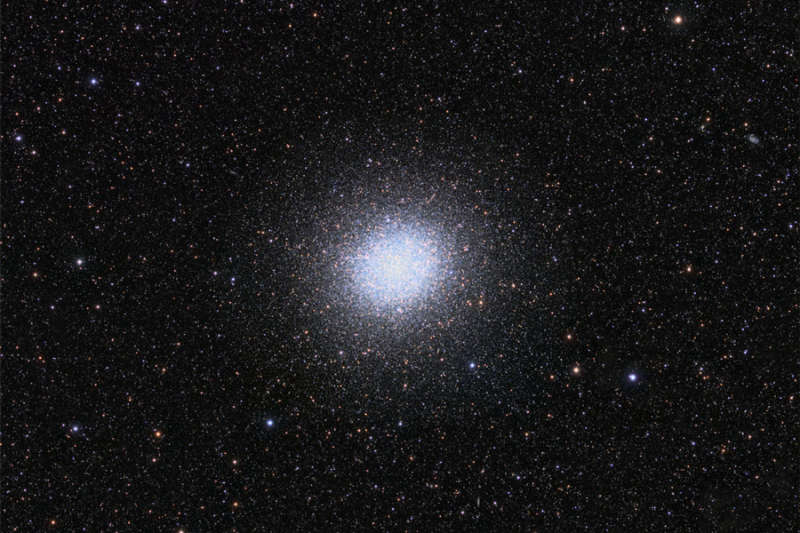
|
Credit & Copyright: Thomas V. Davis
(tvdavisastropix.com)
Explanation:
This huge ball of stars predates our Sun.
Long before humankind evolved, before
dinosaurs roamed,
and even before our Earth existed, ancient globs of
stars condensed and orbited a young
Milky Way Galaxy.
Of the
200 or so
globular clusters that survive today,
Omega Centauri is the largest, containing over ten million stars.
Omega Centauri is also the
brightest globular cluster, at
apparent
visual magnitude 3.9 it is visible to
southern observers with the unaided eye.
Cataloged as NGC 5239,
Omega Centauri is about 18,000
light-years away and 150 light-years in diameter.
Unlike many other
globular clusters,
the stars in
Omega Centauri
show several different ages and trace chemical abundances,
indicating that the
globular star cluster
has a complex history over its 12 billion year age.
|
January February March April May June July August September October November December |
| |||||||||||||||||||||||||||||||||||||||||||||||||||||||
NASA Web Site Statements, Warnings, and Disclaimers
NASA Official: Jay Norris. Specific rights apply.
A service of: LHEA at NASA / GSFC
& Michigan Tech. U.
Based on Astronomy Picture
Of the Day
Publications with keywords: Omega Centauri - globular cluster
Publications with words: Omega Centauri - globular cluster
See also:
